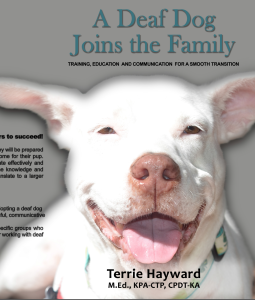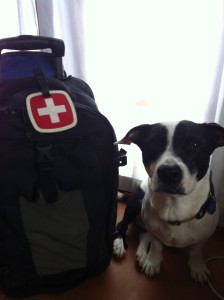IT’S ALL ABOUT COMMUNICATION!
Do you sometimes feel like your dog is ignoring you or misbehaving on purpose?
Often folks may ask the question, “I wouldn’t let my child get away with that behavior, so why would I let my dog?”
The answer lies in the fact that we are not being permissive by ignoring behavior that we don’t like, but rather we are choosing to communicate and educate.
Addressing unwanted behavior with punishment, either physical or even verbal, actually serves to reinforce that behavior by paying attention to it; even with a stern “no.” Verbal corrections or exclamations are, by definition, punishment as they intend to decrease or stop behavior.
Instead, what we want to do is to ignore the behavior that we don’t like, while teaching an alternative or incompatible behavior that we can reinforce.
People say, “But don’t we need to tell the dog when we are displeased?” The issue here is communication. Shouting, “no” etc. when a dog does something that we don’t like is confusing to the animal. From the animal’s perspective it learns that sometimes the human acts unpredictably and violently or angrily.
If our timing is poor, they may also associate the punishment with something else unrelated going on in the environment. For example, if a cat happens to be passing by in the distance at the exact second that we are shouting at the dog for jumping up behavior, the dog may associate the cat (not the jumping) with the behavior that has caused the human’s erratic or scary (in the dog’s eyes) response. This then can turn into more aggressive behavior towards cats.
It is true that punishment can work. If the timing is impeccable and delivered at the appropriate intensity the behavior may decrease or stop. However, there are several risks.
Again, first our timing may be off. This is frequently the case for folks who have not studied the science of behavior (unless they happen to get lucky). In this case we actually “punish” the wrong behavior.
Two, as stated above, we may cause other dangerous side effects including aggression, or fear (of the “unpredictable” human) or escape/avoidance (because they are wary around us as we-from the animal’s point of view-are random with our violent outbursts) or apathy, which is when we break the animal down into submission and they are hesitant to do anything at all lest they (again in their eyes) be unduly chastised.
According to behaviorist Ian Dunbar, if in fact we have perfect timing, great understanding of canine body language and learning theory then we do not need to use punishment.
More effective behavioral change comes by ignoring what we don’t like, training and educating behaviors that we do want to see, and reinforcing the behaviors that we like!



